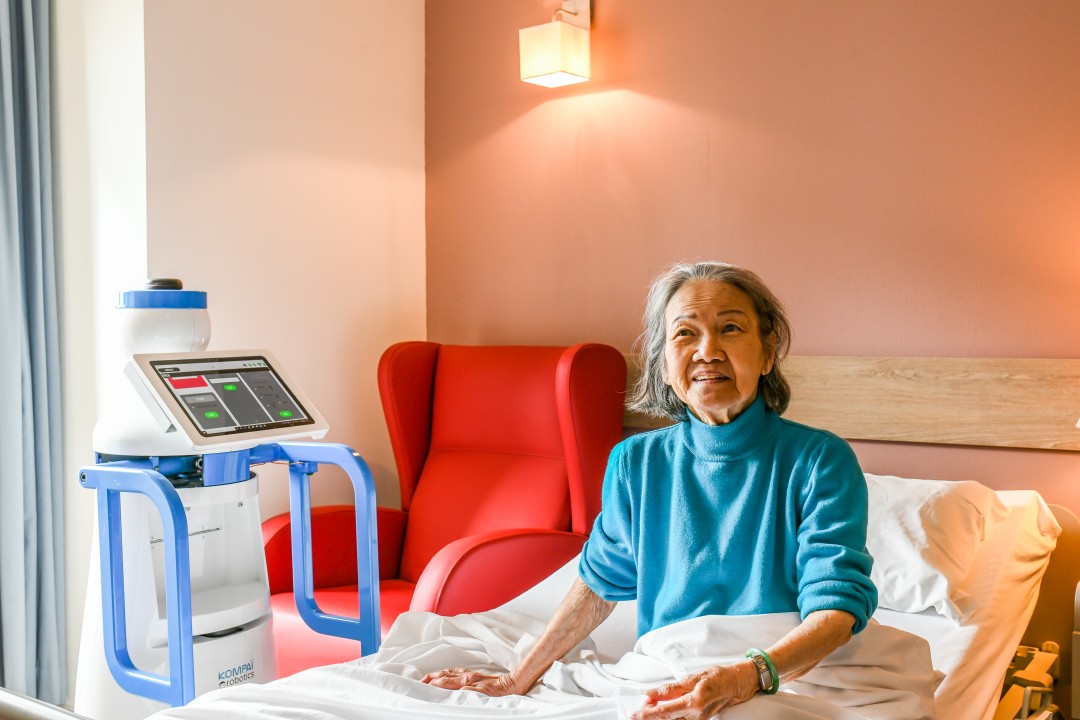
KOMPAÏ and COVID-19 in Nursing Homes
A multi-function robot for daily living and reconfigurable for sanitary crises
Nursing homes pay a heavy price in health crises like COVID-19.
The first emergency measures to fight a threat like coronavirus, adopted unanimously, are confinement and social distancing.
During this crisis, various experiments have shown that robotic assistants can take part of the repetitive tasks by reducing the exposure to the risks of caregivers:
- Autonomous disinfection with UV lamps
- Spraying to purify the air
- Vital signs monitoring of a confined patient
- Transportation of small items and meal trays in contaminated areas
- Automatic detection of people with temperature or wearing mask
- Use the telepresence function to keep the social link for isolated people
- ...
Each of them is of interest, but establishments cannot buy several different robots only for unpredictable and rate crisis situations.
Since its creation in 2016, KOMPAÏ robotics has based its analyzes on the OECD report which says that 10 million caregivers will be missing in Europe by 2050.
The Kompaï robot, thanks to its modular design, is capable of carrying any type of load, whether UV lamps, sprayers, sensors, meal trays ... it responds in priority to the needs of establishments for the repetitive tasks of their daily life, by helping caregivers and not by replacing them!
It was designed primarily for daily routine actions, such as rounds of animation, monitoring or distraction of residents in nursing homes. Thanks to these daily actions, it presents a Return on Investment of a few months.
But thanks to its multifunctional capabilities, it can be reconfigured quickly in the event of a crisis, by adding additional elements.
He can thus, depending on the needs:
- Making rounds in common areas or rooms, to disinfect using UV lamps and/or sprays
- Measuring the temperature of people crossed during rounds in the establishment, and generate alarms to the staff
- Doing the sentry at crossing points such as the main entrance door or common areas (temperature, masks ...)
- Allowing confined people to distract themselves and keep social ties, especially with their loved ones, by making the robot available in the room
- Thanks to its telepresence capabilities, doing tele-consultation, or more simply allowing staff to interact with isolated residents from a secured room, avoiding decontamination procedure when getting out
- Transporting meal trays from the kitchen to bedrooms, or bring items to confined people
- Disposing of waste and transporting clean linen, by pulling standard trolleys
- .. .
Although it is clear that the use of robots will develop, it is inconceivable for establishments to be equipped with several different types of robots, and to keep them unused waiting periods of crisis. Conversely, adopting multi-functional robots useful in everyday life, economically justifiable, and which can be reconfigured quickly to deal with unforeseen events like the COVID-19 is the strategy to adopt.
